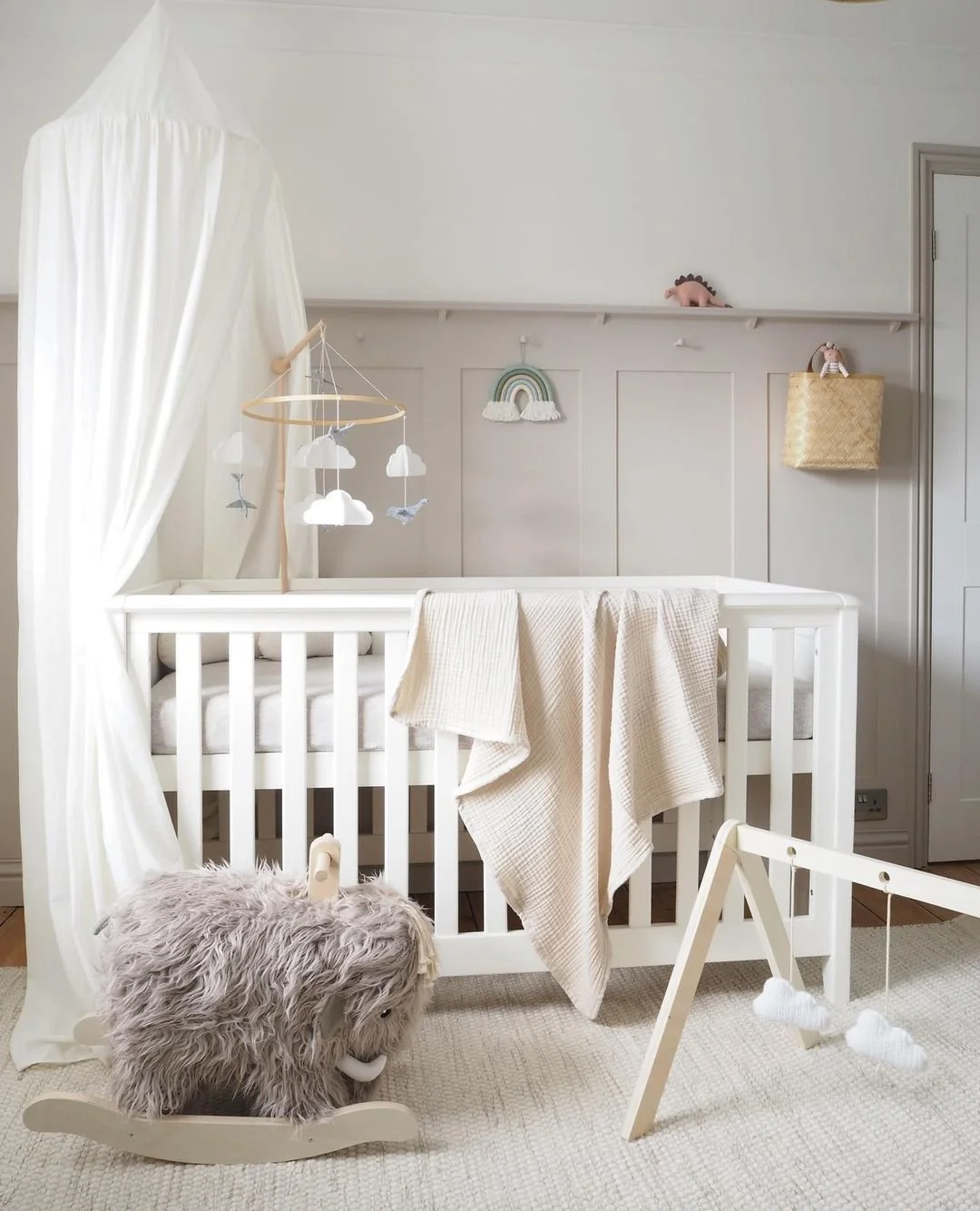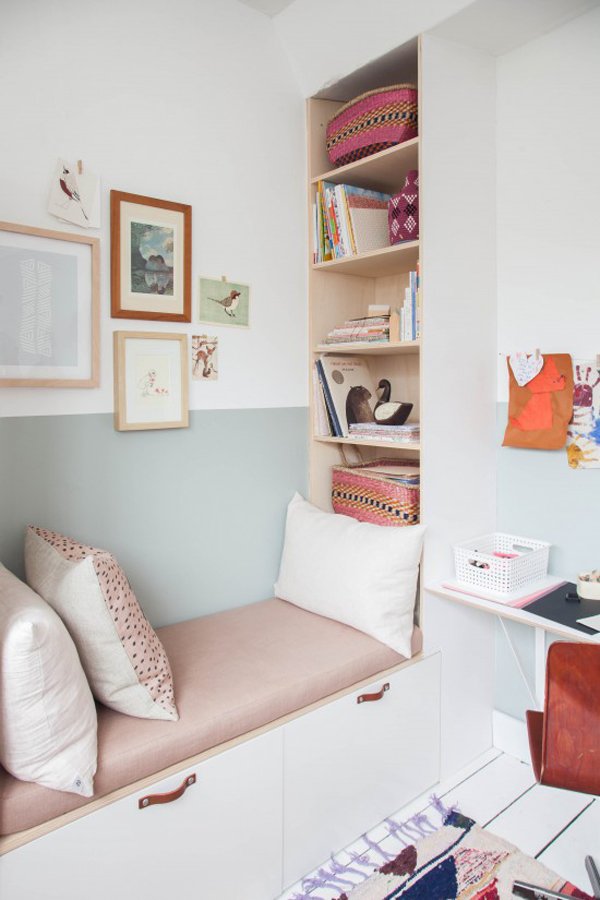5 tips for decorating kids bedrooms
Designing kids rooms can be challenging… you want to give your child a space which is functional but fun, relaxing but also playful, uncluttered but full of storage… so there’s a lot to consider! Here’s some ideas to help you get started.
1. Decide on your base
You have 2 options here, and the option you choose will depend on how frequently you are willing to re-decorate!
Your first option is to use a neutral and classic base on the walls so that the foundations of the room can grow with your child as they get older. If you decide to go down this route, keep the colour palette timeless, and you can swap in more age appropriate accessories as they grow.
This stunning nursery, by Luke Arthur Wells has a neutral base.
Your second option is to make a statement of the walls, and yes your child might grow out of it but you can really go nuts with colour and creativity here; whether it’s wallpaper, murals, or paint effects. Paint the woodwork or paint the ceilings too for even more fun.
Mural from Rebel Walls
Mural from Munks and Me
2. Get the storage right
Children’s rooms have to be very hard working when it comes to storage as they come with so much stuff! Look for opportunities to add functional but attractive storage, for example:
make use of the walls - wall hooks and pegs can be used for hanging clothes, bags and baskets
multifunctional benches can be used for seating with storage underneath
make use of the space underneath the bed with rollout boxes
Built in storage, designed specifically for your space and fitted by a carpenter, is a more expensive way of achieving this but would help you make the most of every inch of space that you have. Or alternatively use a system like Tylko which allows you to customise the dimensions and design of your storage online.
This room featured on LivingETC provides storage through bench seating (and underneath it) as well as peg board walls and shelves.
This kids room, via Petit and Small, features a lot of hard working built in storage.
3. Make it cohesive
The key to any room, not just a child’s room, is to make the design cohesive through pattern and repetition. That doesn’t mean everything needs to be matchy-matchy, but deciding on a colour palette and style upfront and consulting that colour palette whenever you add things to the room will help make the space feel put together.
Image credit: Unsplash
4. Be creative
Designing children’s rooms is so much fun because you can let your creativity flow - this is a chance to get away with something that might not fly elsewhere in your house! Pinterest is an amazing place to find creative ideas for your kids room, but some of my favourite ideas include:
Replacing drawer pulls with creative and unusual objects (gold dinosaurs, anyone?!)
Covering the ceiling or above the picture rail with wallpaper - bonus points if it’s peel off wallpaper to save you redecorating
Installing fun lights
Replace the handles on furniture with these gold dinosaurs, from Etsy
Hot air balloon light, from Dunelm
A beautiful wallpapered ceiling, as featured on DecorPad (note the neutral walls and built in storage…)
5. Don’t forget comfort
And finally - you want your child’s room to be somewhere that they enjoy and feel comfortable spending time in. So don’t forget comfort; which usually means introducing textiles and soft lighting.
That might mean a comfy rug, a princess canopy over the bed, a beanbag reading corner, a reading teepee with cushions and throws inside, or even just lots of cushions on the bed to make a comfy nest.
A comfy reading nook added underneath the window, from historiskahem.se
Children’s kilim rug, from Mini Knots
If you’d like my help with your next project, check out my services to see how we can work together. If you’ve enjoyed this blog, don’t forget to subscribe below to receive my new post in your inbox every Sunday.












